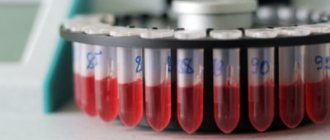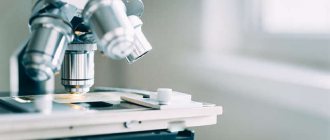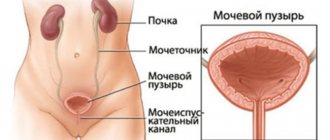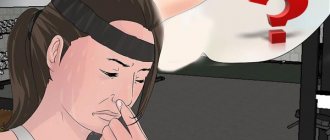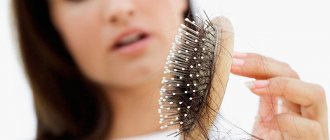Testosterone is a hormone responsible for the formation and development of secondary sexual characteristics, the growth of bones and muscles. In the male body, production occurs in the cells of the testes. The adrenal glands and ovaries produce testosterone in women. The level of the hormone in men is significantly higher than in the fair sex. A change in the concentration of a compound in the body in both one and the other gender group may indicate the presence of a pathological condition or the onset of the development of a serious disease.
It should be said that testosterone in women, the norm of which ensures the stable functioning of many body systems, can go beyond both the minimum and maximum limits. The hormone is responsible for the maturation of the follicle in the ovaries. Thanks to its activity, stable functioning of the sebaceous glands and bone marrow is ensured.
When should you get tested? What is the normal testosterone level?
In women, the concentration is 0.45-3.75 nmol/l, in men – 5.76-28.14 nmol/l. Diagnosis of the presence or absence of changes in hormone levels begins with a laboratory analysis of blood serum. There are emotional disorders, disturbances in metabolic processes, and a decrease in muscle activity when testosterone is insufficient in women. The norm is achieved by taking additional medications. Hormone therapy is prescribed by a doctor.
Insufficient testosterone levels in women are also manifested by a sleepy, lethargic, tearful state, and a feeling of depression. Such changes are most often characteristic of the postpartum period. When prescribing therapy, it is necessary to ensure control over the concentration of the hormone. This will achieve the average concentration in which testosterone should be present in women. The symptoms of the pathological condition will be completely eliminated. The specialist must ensure that the hormone content does not exceed the maximum permissible limits.
What causes increased testosterone?
Adrenogenital syndrome provokes high testosterone in women;
New growth of the testes increases testosterone in men;
Disease or Itsenko-Cushing syndrome;
A neoplasm in a woman’s ovaries, leading to the development of “masculinity” (deepening of the voice, a figure similar to a man’s, etc.);
Decreased sex steroid binding globulin, or SHBG, in the blood;
Excess and high intensity physical activity;
The use of certain medications, for example, levonorgestrel, mifepristone and various oral contraceptives, as well as tamoxifen, finasterine, danazol, phenytoin, etc.
https://youtu.be/1IyaA7e8aaY
High testosterone in women
It should be said that for men, the main problem with age is a decrease in the hormone content in the blood. Representatives of the fair sex have another problem - too much of it. High testosterone in women manifests itself primarily externally. If the concentration of the hormone is outside the upper permissible limit, hair on the body and face begins to actively grow in a male pattern.
An increase in hormone content is characteristic of the gestation period. However, during pregnancy, the concentration in which testosterone is found in women is normal. At the same time, the expectant mother may have four times more hormone in her body than before pregnancy. This fact is not a dangerous deviation in this condition. In many other cases, excess testosterone in women can lead to disturbances in the reproductive system and negatively affect the menstrual cycle (bleeding becomes irregular or stops altogether). As a result, serious difficulties may arise in conceiving a child, and for some, carrying a fetus to term until birth is not possible. In this regard, during the period of pregnancy planning, you should undergo all the necessary examinations and take the necessary tests. If necessary, the specialist will prescribe medications to reduce testosterone levels. In women, in addition to external manifestations, a large amount of the hormone is also manifested by dry skin and changes in physique. The voice becomes rough, hair begins to fall out, and its fat content increases (due to increased activity of the sebaceous glands). Among other symptoms that accompany the pathological condition, one should note increased excitability, sexual desire, physical activity, causeless aggression, rudeness, and irritability. At the same time, the risk of developing serious diseases such as ovarian tumors or Cushing's syndrome increases. If any of the above manifestations develops, you should contact a specialist as soon as possible. The sooner a woman visits a doctor, the greater the likelihood of correcting the situation with the least loss.
Why do women need testosterone?
Many people associate this word with something emotional - masculinity, aggressiveness, pressure. However, all this testosterone machismo is just a side effect, or even a myth Testosterone - What It Does And Doesn't Do. The hormone has many more important tasks than turning a man into a macho man. And these functions are common to both sexes.
Testosterone plays a key role in dozens of processes within the body. It (in combination with other substances, of course) provides strength to bones, is involved in the production of red blood cells, affects the processing of fats, strengthens muscles, affects the mood and cognitive capabilities of the brain, enhances or weakens sexual desire at different periods of life... In general, There are countless functions, and a woman’s body without testosterone is just as unthinkable as a man’s.
There is another factor that makes testosterone necessary for women. The male hormone is an indispensable precursor of Conversion of blood androgens to estrogens in normal adult men and women of female sex hormones. That is, estrogens are produced from testosterone. The same ones that in many ways make a woman a woman: they trigger puberty, make breasts grow, “turn on” menstruation and allow you to get pregnant and bear a fetus.
From this, by the way, a paradoxical fact follows: the less a woman has a “male” hormone, the less feminine she is, because she also has a deficiency of estrogens. However, an increased amount of testosterone also does not lead to anything good.
Reasons for the increase in concentration
In women, the most common predisposing factors include, first of all, an incorrectly formulated diet. The problem of excessive levels of the hormone in the blood is most often faced by those ladies who adhere to strict diets. Other reasons include hereditary predisposition, prolonged use of a number of medications that affect the state of hormonal levels in general and the content of individual hormones in particular, as well as high physical activity.
Testosterone may also increase if tumors develop. Temporary causes that do not have significant clinical significance include, as mentioned above, pregnancy.
Total testosterone
The general vehicle consists of the following percentage of biologically active substances:
- 2% free
- 44% bound to globulin
- 54% in a connected state with many other proteins, including albumins.
A symptom of low testosterone is decreased sexual desire.
To regulate hormonal balance, experts recommend eating healthy foods, maintaining physical activity, and thinking positively.
If therapy is prescribed, regular monitoring of hormone saturation should be ensured. Thus, the average and necessary concentration in the blood is ensured, eliminating all symptoms of excess or deficiency of TC.
Treatment with increased hormone concentrations
First of all, experts recommend eliminating dietary errors. It is necessary to add juices (freshly squeezed preferably), a small amount of salt and sugar, white bread, bee honey, caffeine, dairy products with normal fat content, vegetable oils, fried foods to your daily diet. For more serious causes, appropriate treatment may be prescribed, including medications. Taking medications without consulting a doctor is strictly prohibited. In addition to hormonal drugs, medicinal herbs can help reduce testosterone levels. In particular, evening primrose, angelica, black bud and other plants are very effective. Complex therapy is often recommended, including both traditional and folk methods.
Hormonal drugs are prescribed only when high testosterone levels pose a danger to the woman’s health. As a rule, when prescribing such treatment, in addition to stabilizing the concentration, the functions of many systems that have failed are normalized. For example, weight returns to normal, sweating decreases, and arrhythmia is eliminated. Many patients get rid of insomnia.
High TC rate
In the case of normal androgen levels, everything is clear, but what happens when it increases beyond the permissible limit?
- Firstly, external signs appear: hair growth on the face, like in men, dry skin, timbre of voice, changes in physique, curls on the head often become oily and fall out.
- Secondly, changes occur in the genitals. After an increase in TC, a woman’s body becomes non-reproductive. Very often they are noticed or their absence at all.
- Thirdly, the psychological state changes, expressed in rudeness, excessive excitability, and frequent sexual desire.
- Fourthly, cancer develops.
If these signs of increased testosterone levels develop, you should immediately consult a doctor. He will determine the exact amount of androgens using test results and a complete examination of the body, and then prescribe medications that lower the level of these biologically active substances.
Additional tests
The content of free testosterone is of no small importance. Women have their own norm for each age. So, for girls from 6 to 9 years old - less than 1.7, in the reproductive period - less than 4.1 pg/ml, during menopause - the same as in childhood. Free testosterone is the active form of the hormone. It affects target organs that have protein receptors that respond to androgens (hair follicles, muscles, liver, genitals). When exposed to alpha-5-reductase, the hormone is transformed into dihydrotestosterone. The amount of this active form of the hormone is determined by several factors. One of them is the presence of binding proteins. These include, in particular, globulin and albumin. Part of testosterone interacts with the latter. Another part of it (about 60%) binds to SHBG (sex hormone). About 1-2% is free testosterone. Its determination is clinically important in confirming hirsutism in polycystic ovary syndrome. The concentration at which total testosterone is found in women does not reflect the content of all biologically available forms. In this regard, additional research is being carried out, thanks to which the picture of hormonal levels becomes clearer. This is especially important during the development of pathological conditions, during pregnancy, with hypothyroidism, virilizing adrenal tumor, polycystic ovary syndrome, and clitoral hypertrophy. With a reduced level of free testosterone, the likelihood of primary and secondary hypogonadism, gonadal hypoplasia, and others increases.
Free testosterone
The concentration of free TC in the period from 0 to 9 years is 1.7 pg/l. By the way, the same number of picograms per liter of blood is found in boys during this prepubertal period.
During puberty, free testosterone increases to 4.1 pg/l and remains the same until menopause. During menopause, its amount drops again to 1.7 pg/l.
During pregnancy and ovulation, the androgen level can increase up to 4 times. In the second phase of the cycle, its indicator will also remain elevated.
In relation to the time period, the amount of biologically active substances also fluctuates: in the morning the indicator will be the highest, and in the evening it will decrease.
A decrease in the level of free hormone entails pathology in the normal process of burning fat and forming muscle mass. The cause may be diet, poor lifestyle, obesity, stress, menopause, or chronic disease.
Signs of a reduced level of free TC may be:
- Sweating
- Fatigue
- Drowsiness
- Oily skin
- Depression
- Weak sexual desire
How to take tests correctly?
In different laboratories, the cost of the study ranges from 200-1000 rubles. As a rule, the result of the analysis is known within a day. To avoid inaccuracy, a number of rules must be followed. Women should have their blood tested on the third to fifth and 8th to 10th days of menstruation. One day before the expected date of the study, you should stop any physical activity, training, and try to avoid worries and stress. It is also recommended to refuse sexual contacts. Immediately before donating blood (an hour or two), you should calm down and rest a little. Smoking is not recommended. If you follow these fairly simple instructions, you are more likely to submit high-quality material and, accordingly, obtain correct and accurate results.
Testosterone analysis: how to prepare
Since physical activity provokes the production of testosterone, you should avoid it the day before the test. This applies to intense sports and regular weight lifting. Smoking should also be avoided.
For children and men, the test can be taken in the morning, on any day, for women - on the 6-7th day of the menstrual cycle (unless the attending physician has prescribed other dates for diagnostic purposes).
The most favorable time to take blood for testing is from 8 to 11 am. A prerequisite is that blood is donated on an empty stomach, that is, after 8 and no more than 14 hours without food. You can only drink water.
What can affect the quality of the study?
Inaccurate results may arise due to several reasons. One of the main ones is taking medications that affect the concentration of hormones in the blood. In particular, these include anticonvulsants, anabolic steroids, valproic acid, barbiturates, and oral contraceptives. Among the drugs it is also worth mentioning such medications as Mifepristone, Cimetidine, Rifampicin, Casodex, Tamoxifen, Danazol, Levonorgestrel, Naloxone, Nafarelin. These and a number of other medications help increase testosterone levels. A decrease in blood concentration is caused by drugs such as antiandrogens, corticosteroids, narcotics, and phenothiazides. The following drugs should also be mentioned: Tetracycline, Interleukin, Carbamazepine, Cyclophosphamide, Ketoconazole, Finasteride, Leuprolide, Verapamil. A decrease in testosterone levels is also provoked by follicle-stimulating hormone, ethanol, glucose, and estradiol valearate.
Folk remedies
There are also folk remedies for increasing hormonal levels:
- So 100 grams of pollen should be mixed with half a can of condensed milk.
- The mixture should be kept in the refrigerator for 2 weeks, and then drunk 1 tbsp. in the morning 30 minutes. before meals.
- You should start taking it with 1 tsp, gradually increasing the dose to the desired level.
It is also recommended to take decoctions of ginseng, rose hips and rowan to increase testosterone levels.
To reduce testosterone levels, folk remedies are also used that have a positive effect on women’s health and hormone production:
- Red clover contains estrogens of plant origin, which quickly normalize hormonal levels and help reduce the overall level of testosterone in the blood;
- Angelica can regulate metabolism and normalize the functioning of the ovaries and uterus in women. It also calms the nervous system and relieves stress, helps cope with insomnia, and also increases the sensitivity of all cells to estrogen and progesterone;
- Peppermint can normalize hormonal balance and restore the functioning of the reproductive system. This herb is soothing and has a pleasant aroma. It can be added to salads, desserts and tea.
- phytoestrogens contains licorice root, which regulates the functioning of the genital organs and reduces androgen levels.
Testosterone in girls' bodies
We need to figure out what this hormone is responsible for in the female body.
Only free testosterone is considered the active substance, which is the most important, despite the fact that it occupies only 2% of the total amount.
So, it performs the following functions:
- The main function that these male hormones perform in women is to regulate sexual desire.
- Increased muscle mass.
- Increase and synthesis of proteins.
- Controls the functioning of the sebaceous glands.
- Testosterone helps calcium to be absorbed
and deposited in bone mass. - Promotes proper follicle maturation.
- Regulates the formation of the mammary gland.
A drop in testosterone levels as one of the causes of osteoporosis
Today there is no doubt that the development of bone diseases is influenced by disruptions in the endocrine system. In particular, insufficient estrogen during menopause directly affects bone mineral density . Bone loss after 45-50 years in a woman reaches 3% per year. But a drop in testosterone levels is also dangerous, especially considering that women initially have very little of it.
For a long time, it was believed that bone health in women depended solely on the presence of estrogen, since it maintained the necessary skeletal density. However, several years ago, European scientists found that testosterone is also involved in the process of osteogenesis. A decrease in the amount of androgen in the blood is one of the leading causes of osteoporosis.
It also turns out that androgen stimulates osteoblasts to build new bone cells. Why is this happening? The fact is that testosterone has an anabolic effect. By the way, this is precisely the property that athletes use to increase muscle mass. Note that the male hormone strengthens muscles that help a person maintain mobility.
As mentioned above, testosterone is also necessary as a raw material for the production of estrogen in the female body. Therefore, both men and women should try to prevent testosterone levels from falling to critical levels.
Modern research
So, today many scientists have come to the conclusion that testosterone has no less effect on osteogenesis than estrogen. It is assumed that bone mass growth reaches its peak at age 30 precisely because the production of these two hormones reaches its maximum value at this time.
German researchers conducted a series of experiments on rodents to determine the causes of osteoporosis. To do this, they compared the effects of estrogen and testosterone on the bone tissue of animals. It turned out that both substances have a significant effect on the skeleton. In particular, the strength of cancellous bone increased.
Russian researchers from the Penza Institute for Advanced Medical Studies, who examined more than a thousand patients with osteoporosis, most of whom were women of menopausal age, came to similar conclusions. The patients took the drug "Osteomed", containing drone brood - a source of entomological hormones: estradiol, prolactin, progesterone and testosterone. As a result, after 1-3 months of taking the drug, the severity of the pain syndrome decreased three times.
In this regard, it is worth citing research data from Swedish doctors. A scientific group led by Myrta Picver (Skein Hospital at Lund University) found that androgen is vital for joints. For almost half a century, scientists have been observing local residents; in total, more than 30 thousand people were examined.
These scientists concluded that a lack of testosterone in youth threatens a number of musculoskeletal diseases in old age. Especially often, such people suffered from joints. According to Myrta Pikwer's group, androgen stimulates the production of chondrogenic cells, which are necessary for the formation of collagen and elastin. In addition, testosterone is necessary for the restoration of cartilage tissue.
